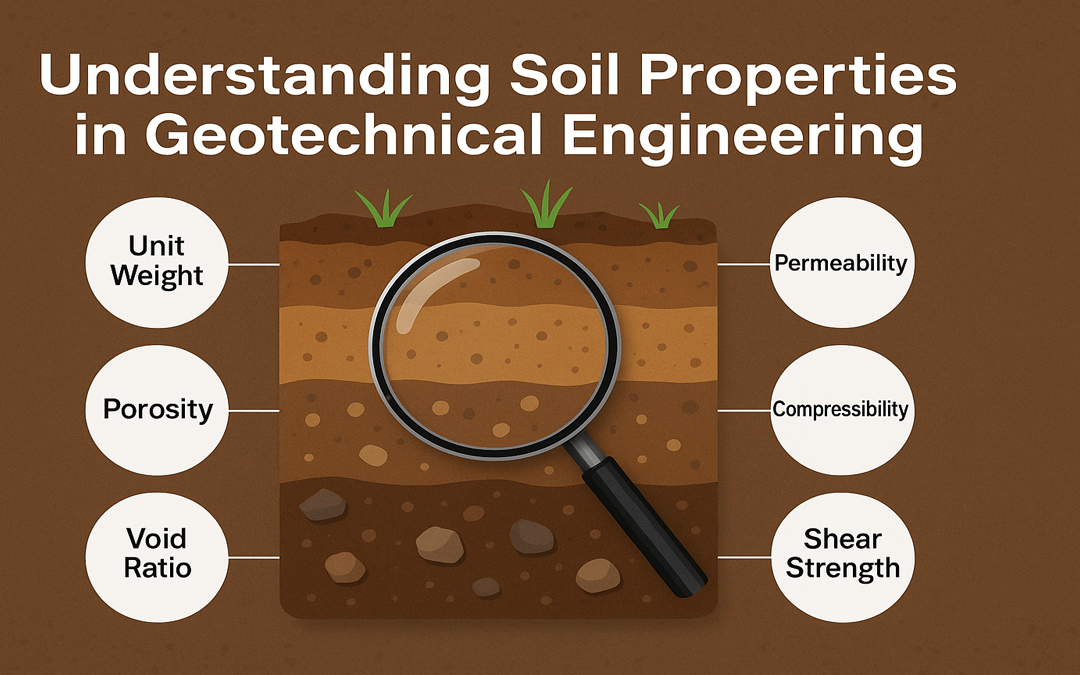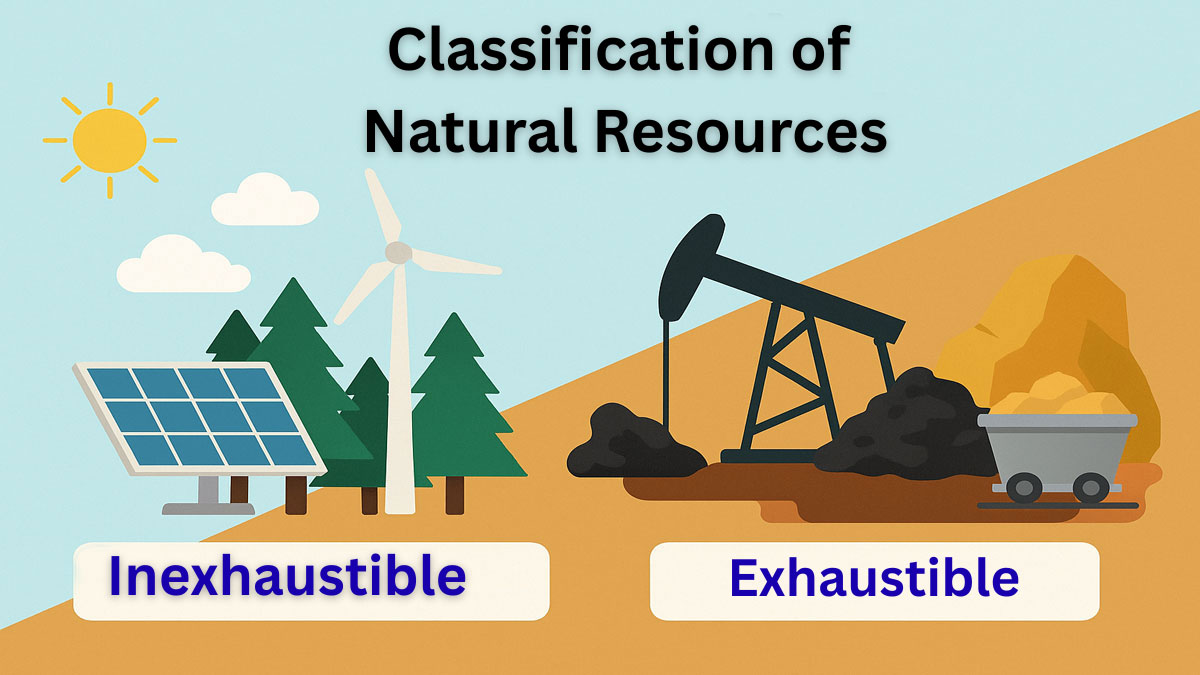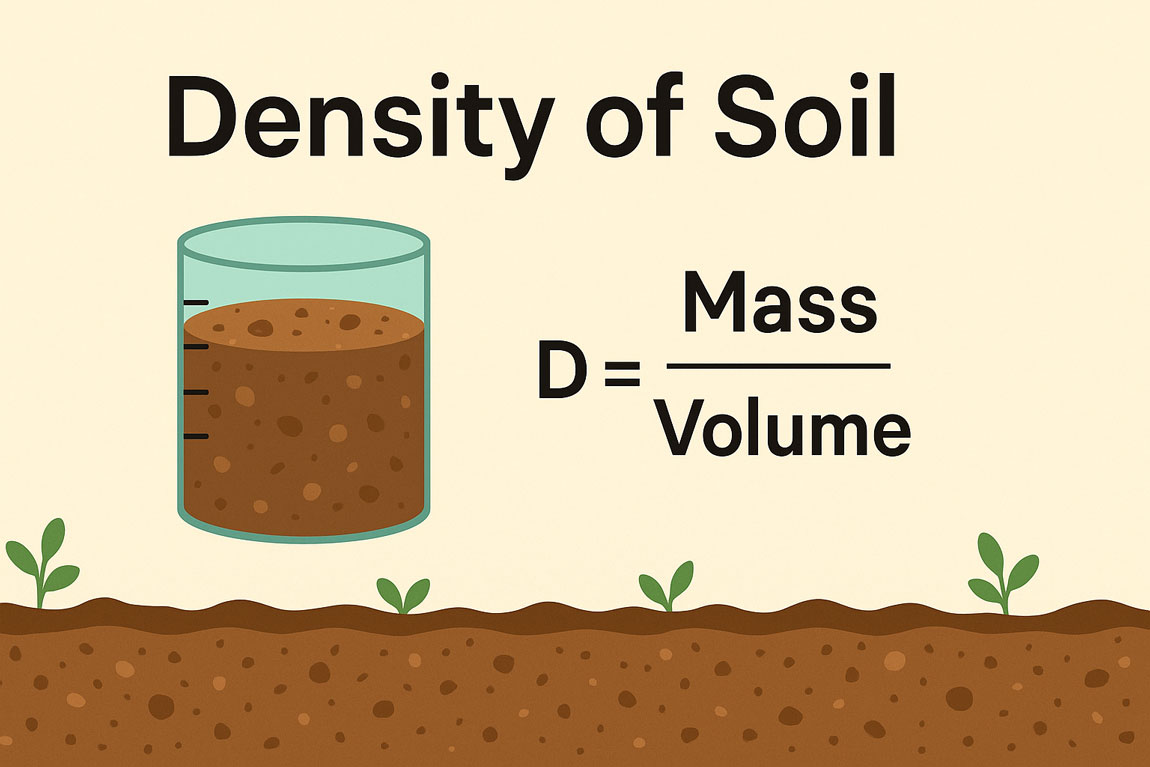Soil properties are fundamental characteristics that define how soil behaves under various conditions. In geotechnical engineering, understanding these properties is essential for analyzing ground stability, designing foundations, and ensuring safe construction practices.
Soil Properties:
Some of the important properties of soils that are used by geotechnical engineers to analyze site conditions and design earthworks, retaining structures, and foundations are:
Unit Weight:
Total unit weight: Cumulative weight of the solid particles, water, and air in the material per unit volume. Note that the air phase is often assumed to be weightless. This property helps engineers determine the load a soil can support and plays a key role in slope stability and settlement analysis.
Porosity:
Ratio of the volume of voids (containing air, water, or other fluids) in a soil to the total volume of the soil. A porosity of 0 implies that there are no voids in the soil. High porosity indicates a loose soil structure, which may affect water retention and the soil’s mechanical behavior under stress.
Void Ratio:
Is the ratio of the volume of voids to the volume of solid particles in a soil. Void ratio is mathematically related to the porosity.Engineers use void ratio to assess the compactness of soil, especially during compaction processes or foundation design.
Permeability:
A measure of the ability of water to flow through the soil, expressed in units of velocity. Permeability is crucial for evaluating drainage, designing dams, and preventing waterlogging or seepage issues.
Compressibility:
The rate of change of volume with effective stress. If the pores are filled with water, then the water must be squeezed out of the pores to allow volumetric compression of the soil; this process is called consolidation. Highly compressible soils may lead to settlement of structures over time, making this an important consideration in construction.
Shear Strength:
The shear stress that will cause shear failure.Shear strength determines a soil’s ability to resist sliding or collapsing, which is vital for slope stability and retaining wall design.
Atterberg Limits:
Liquid limit, plastic limit, and shrinkage limit. These indices are used for estimation of other engineering properties and for soil classification. Atterberg limits help classify fine-grained soils and provide insights into how soils behave under varying moisture conditions.
Conclusion:
Understanding the properties of soil is a cornerstone of geotechnical engineering. These parameters not only influence the stability and safety of structures but also determine how soil interacts with water and load over time. Whether it’s unit weight, permeability, or shear strength, each soil property provides vital data for designing resilient infrastructure.






